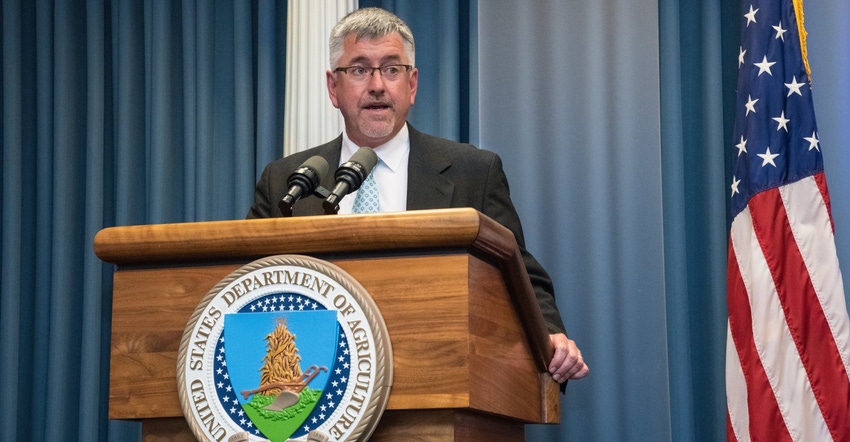
The staff at the U.S. Department of Agriculture's Farm Service Agency (FSA) county offices remain busy, with billions of dollars going out the door. This week, FSA announced $1.68 billion headed to producers enrolled in the Conservation Reserve Program (CRP), and as of Oct. 13, a total of $4.5 billion has been paid out in just the first three weeks of the second tranche of the Coronavirus Food Assistance Program (CFAP 2).
In a one-on-one interview, FSA administrator Richard Fordyce gave high praise to the tremendous staff at the county offices in helping with signups and getting payments out to producers.
Fordyce said he has talked with a lot of producers across the country and said they, by and large, are very appreciative of the efforts by USDA -- as well as Congress -- to offer financial assistance this year. The CFAP 2 borrowing authority was allowed with the increase in Commodity Credit Corp. (CCC) funds in the continuing resolution passed at the end of September.
“We say all the time: 'Our programs don’t make people whole, but they certainly go a long way of making up that gap and really help folks get through a rough patch,'” Fordyce said. “From producers I visit with, they say these payments are really helping pay bills and helping them get through this.”
Fordyce said many farmers were hopeful going into 2020 with positive news on the China trade front and passage of the U.S.-Mexico-Canada Agreement but then got hit with the coronavirus obstacle.
As it relates to the CFAP 2 payments, USDA reported that as of Oct. 13 a total of $2.389 billion in acreage-based payments have been made so far, or more than 50% of what’s been paid out so far. Specifically, corn producers received $1.4 billion, soybean producers $534 million, wheat producers $201 million and cotton producers $90 million. Next are livestock payments at a total of $1.293 billion, with $1 billion for cattle and $251 million for hogs/pigs.
Fordyce added that with $4.5 billion already in the hands of producers just three weeks after signups began, “that’s really getting it done.”
The initial CFAP payments looked at the price impact of the first quarter of 2020, and CFAP 2 looks at the losses and commodities affected from April through the end of 2020. For instance, livestock payments under CFAP 1 were based on inventory and sales numbers. CFAP 2 payments are based on inventory of non-breeding stock with a payment rate per head.
CRP payments
USDA announced Thursday afternoon that it is issuing $1.68 billion in payments to agricultural producers and landowners for the 21.9 million acres enrolled in the CRP, which provides annual rental payment for land devoted to conservation purposes.
Signed into law in 1985, CRP is one of the largest private-lands conservation programs in the U.S. It was originally intended to primarily control soil erosion and potentially stabilize commodity prices by taking marginal lands out of production. The program has evolved over the years, providing many conservation and economic benefits.
Fordyce said the program has certainly evolved over the last 35 years, first being focused on improving soil erosion rates and taking some less productive land out of production. “While it still accomplishes those goals, in some cases, we know we see a whole lot of other benefits from water quality and wildlife habitat development,” he said.
Additional WHIP+ signup
Another announcement from FSA this week includes the upcoming signup deadline for the Wildfire & Hurricane Indemnity Program Plus (WHIP+) for 2018 and 2019 losses from hurricanes, wildfires, floods, snowstorms, tornadoes and typhoons. The regular signup started in September 2019, but in the early spring, congressional action expanded who qualifies for WHIP+ to those who experienced excessive moisture or drought conditions for the 2018 and 2019 crop years.
Fordyce said this qualification expansion for WHIP+ “brought in a whole bunch of new people” who will now need to sign up for the program. The signup deadline is Oct. 30 to begin the process with a local FSA office.
“It’s not a simple application,” Fordyce said, adding that it’s important to get into an FSA office to begin the process. “It takes our staff quite a bit of time to do one.”
He said USDA has funded more than 133,000 WHIP+ applications as of Oct. 9.
About the Author(s)
You May Also Like






